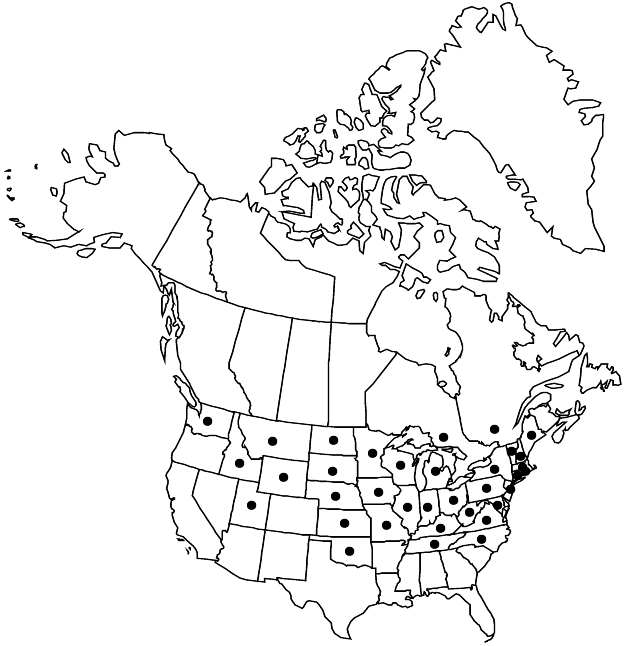Rumex patientia
Sp. Pl. 1: 333. 1753.
Plants perennial, glabrous or very indistinctly papillose normally only on veins of leaf-blades abaxially, with fusiform, vertical rootstock. Stems erect, branched from above middle, 80–150 (–200) cm. Leaves: ocrea deciduous or partially persistent at maturity; blade ovatelanceolate or oblong-lanceolate, normally 30–45 (–50) × 10–15 cm, base truncate, broadly cuneate, or weakly cordate, margins entire, flat or weakly undulate, apex acute or subacute. Inflorescences terminal, occupying distal 1/2 of stem, normally dense, narrowly to broadly paniculate, branches usually straight or arcuate, rarely indistinctly flexuous. Pedicels articulated in proximal 1/3, sometimes almost near base, filiform, 5–13 (–17) mm, articulation usually distinctly swollen. Flowers 10–20 (–25) in whorls; inner tepals broadly ovate, suborbiculate, or orbiculate, (5–) 5.5–8 (–10) × 5–9 (–10) mm, base usually distinctly cordate, margins entire or subentire to very weakly erose, apex obtuse or occasionally subacute; tubercles normally 1, more than 1 mm wide, normally less than 2 times as wide as inner tepals, occasionally 3, then 2 much smaller. Achenes brown, 3–3.5 × 1.5–2.5 mm. 2n = 60.
Phenology: Flowering late spring–summer.
Habitat: Waste places, roadsides, old fields, gardens, disturbed meadows, occasionally in alluvial habitats
Elevation: 0-2300 m
Distribution

Introduced; Ont., Que., Conn., Idaho, Ill., Ind., Iowa, Kans., Ky., Maine, Md., Mass., Mich., Minn., Mo., Mont., Nebr., N.H., N.J., N.Y., N.C., N.Dak., Ohio, Okla., Pa., R.I., S.Dak., Tenn., Utah, Vt., Va., Wash., W.Va., Wis., Wyo., e, s Europe, w Asia, elsewhere
Discussion
Some North American specimens of Rumex patientia appear to belong to subsp. orientalis (= R. orientalis Bernhardi 1830, not Campderá 1819; R. lonaczevskii), which differs from subsp. patientia in having larger inner tepals (6–10 × 8–10 mm, not 4–8 × 4–8 mm).
A predominantly Asian variety with three tubercles sometimes is recognized as subsp. callosus (Fr. Schmidt ex Maximowicz) Rechinger f. [= var. callosus Fr. Schmidt ex Maximowicz; Rumex callosus (Fr. Schmidt ex Maximowicz) Rechinger f.]. However, the distribution of infraspecific taxa of R. patientia in North America has not been studied in detail.
Rumex patientia may be expected in southern Canada, especially the prairie regions of Alberta, Manitoba, and Saskatchewan, as well as in Colorado and other states. According to J. T. Kartesz (1987, vol. 1), a record from Nevada was based on misidentification of R. crispus.
Rumex patientia is the lectotype of the genus. It and the following two species belong to subsect. Rumex.
Selected References
None.
Lower Taxa
"/2" is not declared as a valid unit of measurement for this property.
